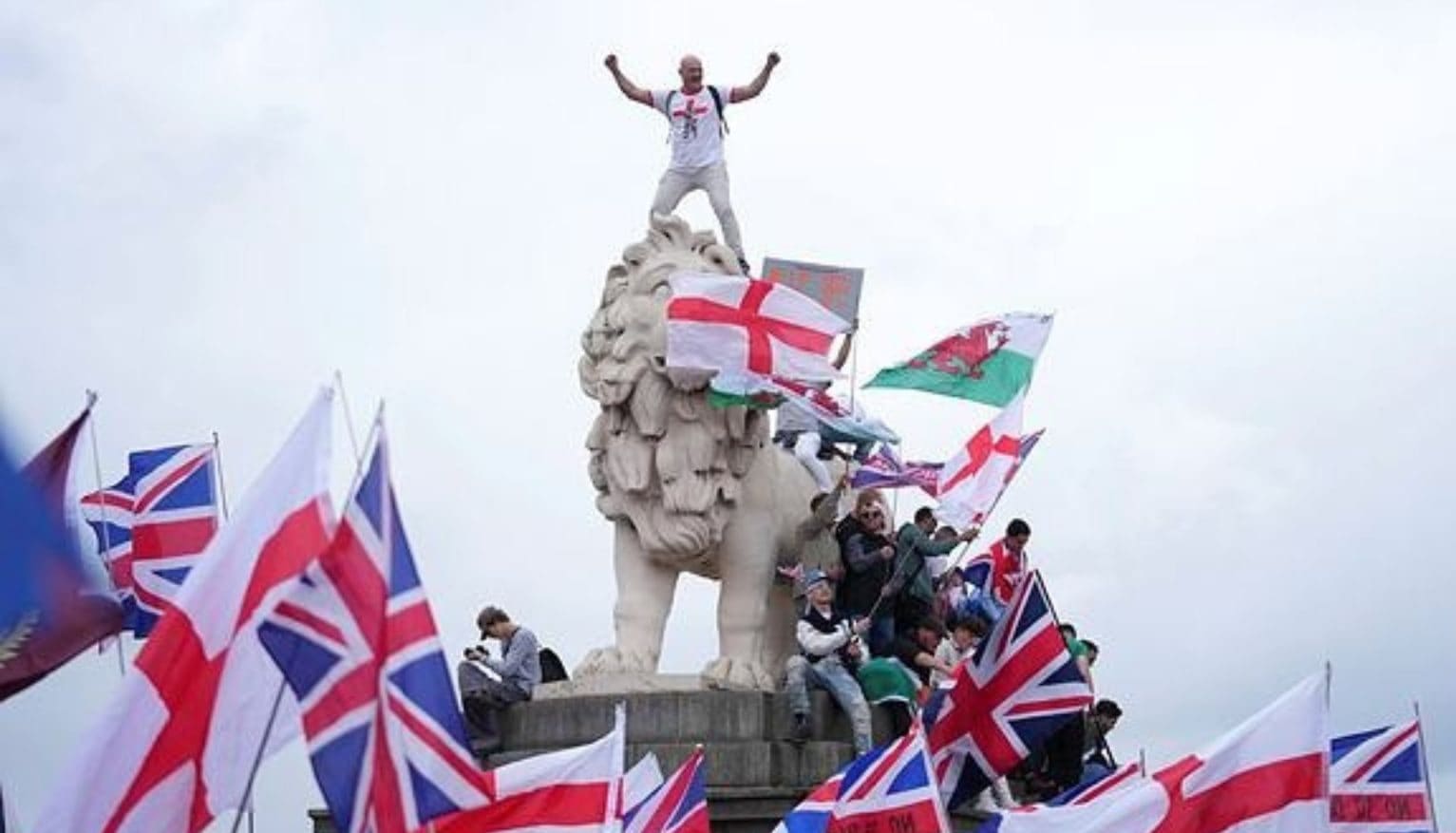September 29, 2025 11:08 AM IST
First published on: Sep 29, 2025 at 11:06 AM IST
The Welsh dragon isn’t a particularly fearsome beast as dragons go. I have one on my new keychain and a rather goofy-looking one has just made his lair on my fridge door, guarding the precious hoard within. It’s a national symbol and associated with Welsh nationalism, but that has largely been an inclusive, civic nationalism that seeks greater autonomy in governance and cultural recognition, not fire-breathing ethnonationalism. So, when Welsh flags started popping up all over the place during my visit to the UK earlier this month, flying from lampposts and all manner of buildings as we drove past, nobody thought anything of it at first. My mother wondered if the local football club, which is seeing a meteoric rise, had won a match. Later, we learnt that these had been put up as part of a campaign linked to the anti-immigration protests taking place across the UK.
Apparently, it’s about patriotism. Even the Prime Minister has felt the need to talk about his fondness for flags. That’s quite a turnaround — when I was growing up, aggressive flag-waving was considered a distinctly un-British way of showing one’s patriotism. Worse, it was seen as American. Now, the flags are everywhere; they’re calling it Operation Raise the Colours. Those behind it are going about it in quite a clever way by encouraging the use of the flags of all four constituent countries of the UK — England, Wales, Scotland and Northern Ireland — and even the Union Flag. Until now, it was usually the English flag — the St George’s Cross, red on white — that the far right tried to appropriate, with some success in imparting negative associations to it. Now, White nationalism has tailored itself to the regions, just as those regions have become more fertile ground for such sentiments with rising immigration in recent years. It was easy to avoid ugly ethnonationalism and promote a more inclusive vision in Scotland, for example, when it was largely monoethnic. Now, you hear slogans pitting “True Scots” against “New Scots” — terminology that comes from a now-outlawed far-right Scottish group.
Is everyone involved in the flag-planting and the protests a White nationalist? Let’s take an example given by Clive Lewis, a Labour MP who happens to be mixed-race. In a post on X, he wrote about an “old school friend” who participated in a major protest in London. The friend, an electrician who Lewis described as “smart” and “not racist”, gave two reasons for going on the march: “The government doesn’t listen to us” and “I want to feel proud of my country again”. He “believes [Reform UK leader Nigel] Farage would be a disaster” if he got into power, and admits there were a lot of “a**holes” on the march — but he himself still went because he wanted to “feel part of something bigger”. And he “wore a Union Jack, not a St George’s Cross as he said that one had been hijacked by racists”.
Lewis calls his friend a “bundle of contradictions” but goes on to give a sympathetic analysis, talking about the hollowing of national life as a result of atomisation and of institutions — from the BBC to the railways, the post office and the National Health Service (NHS) — being underfunded and undermined. He cites Karl Polanyi’s The Great Transformation on how society pushes back when markets are “disembodied” from society, and how “the backlash can turn authoritarian” when “democracies fail to provide a humane alternative”.
Many in Britain have written of a sense of national decline, especially since the global financial crisis of 2008, of stagnant wages and a rising cost of living, a less and less functional state, a paralysed NHS and other decaying institutions, and even children’s height in a particular area being affected by poorer nutrition and healthcare. Drawing a straight line from all this to immigration is trickier. Arguments have been made about the persistent failures of immigration policy — of the strain on housing and public services, of large numbers of migrants from the same community creating ethnic enclaves and failing to integrate and imbibe “British values”, of the government’s apparent inability to reduce the numbers of asylum seekers arriving in small boats and missteps in dealing with them after they arrive. None of that ought to be excused, but it equally does not make immigration the sole, or even the major, cause of the structural problems that are ultimately behind this wave of public anger. Why, then, has it become a lightning rod for all kinds of grievances, as if clamping down on immigration were a panacea?
The blame lies with a media ecosystem that has been whipping up hysteria over immigration for decades, and of the failure of the political class to counter it, calm the public’s fears or come up with sane policies to address the real problems. Instead, we got performative cruelty as exemplified by then home secretary Theresa May’s “hostile environment” policy, which led to the harassment of migrants, fostered xenophobia and eventually led to the Windrush scandal, in which Commonwealth citizens with the right to remain in the UK were detained and faced the threat of deportation. Then as now, Labour politicians have tried and failed — former party leader and current energy secretary Ed Miliband’s “controls on immigration” mug from the 2015 election soon ascended to memehood — to ride the wave of what they believed was irresistible public sentiment.
Coming back to Lewis’s friend, he and many other marchers may not, personally, be racists. But that does not change what these protests are, who is behind them, or what they lead to. As was the case with the protests-cum-riots last year, violence will ensue and has done so, racism will be further normalised and many people will live in an ever-worsening climate of fear, in which they could be physically assaulted at any moment. The government is happy to acknowledge the “legitimate concerns” of the protesters — who is there to address the legitimate fears of immigrants and non-White people?
rohan.manoj@expressindia.com


